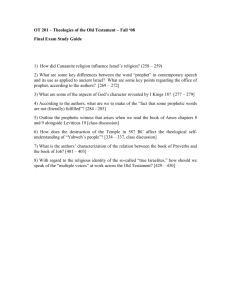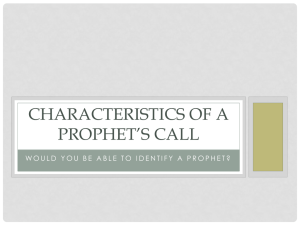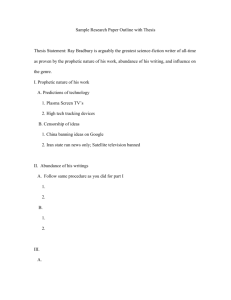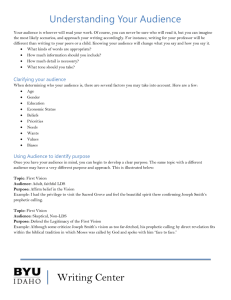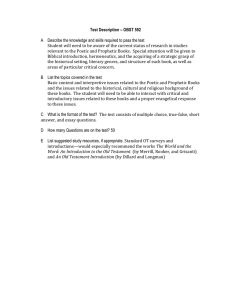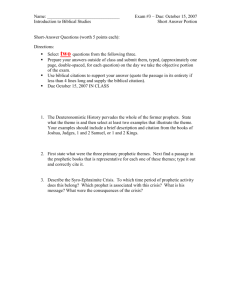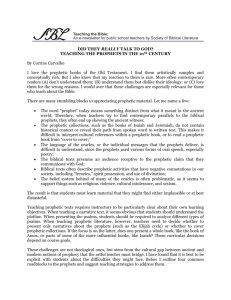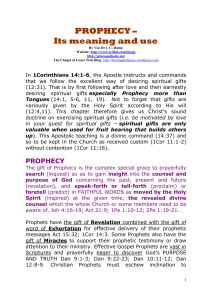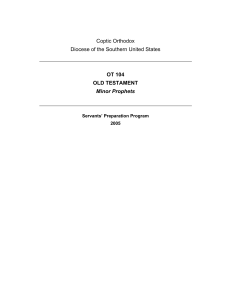Bible 110 Old Testament Prophecy Introduction to Prophecy
advertisement
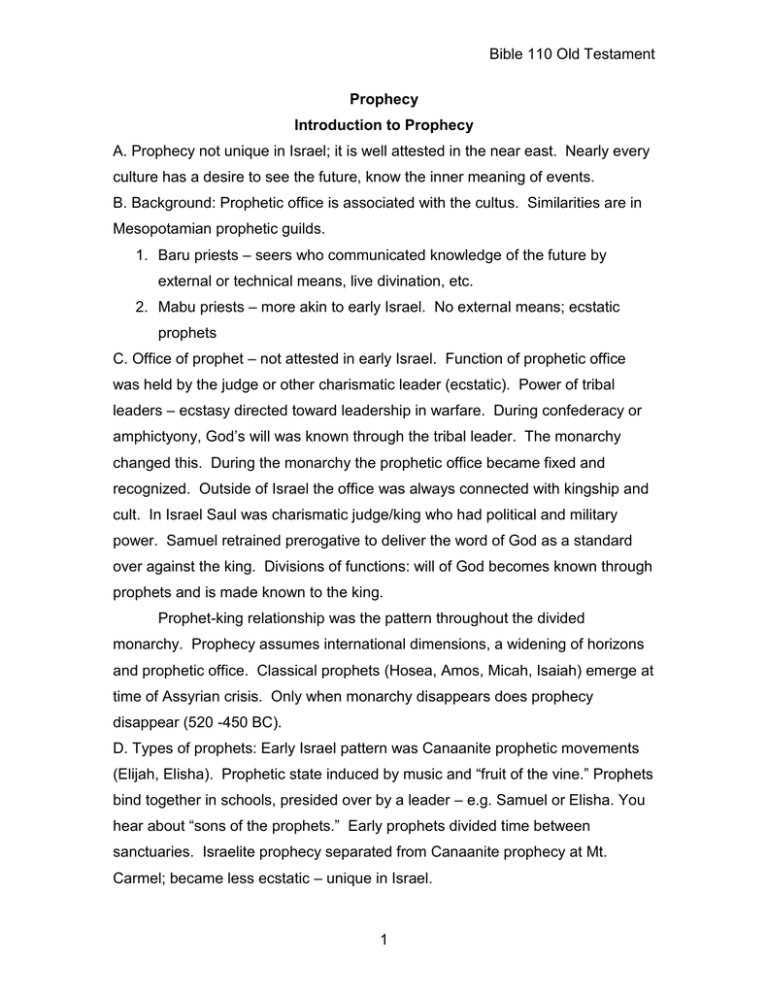
Bible 110 Old Testament Prophecy Introduction to Prophecy A. Prophecy not unique in Israel; it is well attested in the near east. Nearly every culture has a desire to see the future, know the inner meaning of events. B. Background: Prophetic office is associated with the cultus. Similarities are in Mesopotamian prophetic guilds. 1. Baru priests – seers who communicated knowledge of the future by external or technical means, live divination, etc. 2. Mabu priests – more akin to early Israel. No external means; ecstatic prophets C. Office of prophet – not attested in early Israel. Function of prophetic office was held by the judge or other charismatic leader (ecstatic). Power of tribal leaders – ecstasy directed toward leadership in warfare. During confederacy or amphictyony, God’s will was known through the tribal leader. The monarchy changed this. During the monarchy the prophetic office became fixed and recognized. Outside of Israel the office was always connected with kingship and cult. In Israel Saul was charismatic judge/king who had political and military power. Samuel retrained prerogative to deliver the word of God as a standard over against the king. Divisions of functions: will of God becomes known through prophets and is made known to the king. Prophet-king relationship was the pattern throughout the divided monarchy. Prophecy assumes international dimensions, a widening of horizons and prophetic office. Classical prophets (Hosea, Amos, Micah, Isaiah) emerge at time of Assyrian crisis. Only when monarchy disappears does prophecy disappear (520 -450 BC). D. Types of prophets: Early Israel pattern was Canaanite prophetic movements (Elijah, Elisha). Prophetic state induced by music and “fruit of the vine.” Prophets bind together in schools, presided over by a leader – e.g. Samuel or Elisha. You hear about “sons of the prophets.” Early prophets divided time between sanctuaries. Israelite prophecy separated from Canaanite prophecy at Mt. Carmel; became less ecstatic – unique in Israel. 1 Bible 110 Old Testament E. Terms for prophet: Roeh – Canaanite, knowing things concealed from ordinary men. Dreams, perspicacity, clairvoyance, signs Nabi – ecstasies based on direct contact with the divine world; supernormal state of mind in which visions are taken in. Roeh and Nabi sometimes used interchangeably. Prophet direction changes from aiming at king to aiming at people as a whole (9th century). At the same time the charismatic kingship changes to dynastic principle. F. Prophet – Cult – In Israel/Judah prophets worked in communities, spoke from community to community; occupied regular office or place in the cultus alongside the priests. Role of prophet – prayer (mediation between people and God), oracular (mediator, use of urim and thummim to make divine judgments). Prophets tended to question the character of worship (false prophets were nationalistic, status quo. G. Interpretation of Prophesy 1. Must be read from historical background from which they spoke (interpretation of history). 2. Not predictions of distant future but rather of immediate future, conditioned on the response of the people. 3. Timeless quality of prophecy; based on character of God which does not change 4. Prophets do not predict life and death of Jesus Christ (prophets generally did not transcend their own time that much) as much as foreshadows Christ. Prefer to speak of Christ fulfilling O.T. He took on patterns of O.T. prophecy (esp. Suffering Servant). H. Prophetic forms1. Prophetic oracle – simplest form (Thus says Yahweh . . .) 2. Judgment oracle – to individual as nations 3. “Woe is” invective “Woe to . . .” 4. Deliverance or hope oracle (Is. 41:14-16) 2 Bible 110 Old Testament 5. Lawsuit form – Yahweh has a quarrel with Israel 6. Prophetic Torah – prophetic instruction in response to question, “What is to be done?” e.g. Micah 6:6-8 7. Vision form, old seer or Canaanite (Jeremiah 1, Amos 8:1) 8. Prophetic symbolism – acted outward or dramatized message (Is. 20, Hosea’s children) 3
